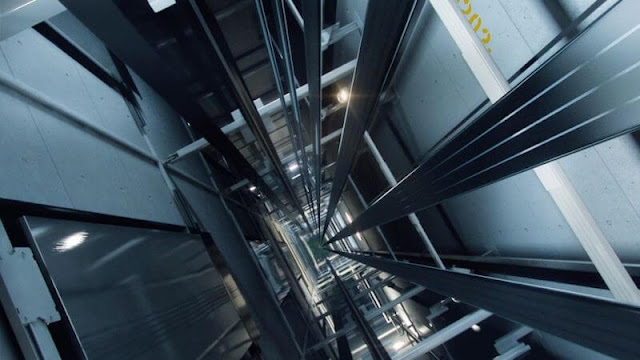An Article by Philip F. Parisi Jr.
The FDNY has issued a bulletin, Office of Technology Bulletin # 2021-03, on May 24th of this year, requiring a new type of elevator annunciator panel in addition to the standard elevator control already needed. This new panel is dedicated to Fire Service Access Elevators.
Not familiar with Fire Service Access Elevators? A little history is in order.
With the enactment of the 2014 NYC Construction Codes, an elevator designated as a Fire Service Access Elevator (FSAE) is required in all buildings with an occupied floor 120 feet or more above the lowest level of Fire Department vehicle access (Building Code section 403.6.1). In plain English, if you are standing on a floor 120 feet or more above the curb, the building must have an FSAE. These elevators require special shaft construction, elevator lobbies (or open onto a properly rated corridor), protection from water discharged by the building’s sprinkler from entering the hoistway, standby power, hoistway lighting, special signage, and on and on (Building Code section 3007). This requirement of the 2014 Building Code caused changes to architectural, structural, and MEPFP & FA design in
buildings to meet the many requirements this elevator demands.
So now that you know what an FSAE is, what is this new annunciator all about?
A new panel must be installed at the Fire Command Station (FCS) and interfaced with the Fire Command Station (FCS). If there is more than one FCS in a building an FSAE Annunciator Panel must be installed at each FCS. This panel must have a series of LEDs for every floor in the building, indicating if a smoke detector in the elevator lobby of that floor has initiated an alarm. In the first case, a temperature reading below 900F is considered “normal” and indicated by a green LED. If the temperature in the elevator lobby is between 900F and 1350F, it is considered “monitoring” and characterized by a yellow LED. When the temperature is above 1350F, it is considered “unsafe” and indicated by a red LED, however different from the one that illuminates when a smoke detector is activated. This same set of three (3) LED’s is required for the elevator machine room that serves the FSAE or, if the elevator is “machine room-less” this set of LEDs must indicate the condition of the hoistway that contains the FSAE.
Let us add a few more LEDs to add to our panel!
The normal and emergency power serving the FSAE must be monitored and annunciated at the panel. Loss of normal power to the FSAE will light either a yellow or amber LED, and it shall remain lit until the power is restored. Loss of emergency power to the FSAE will light either a yellow or amber LED, and it shall remain lit until emergency power is restored. Where mechanical ventilation, whether passive or active, is provided, loss of power to that equipment will light a yellow or amber LED, and it shall remain lit until power to the equipment is restored. Are you sensing a pattern here? All power serving the FSAE and its hoistway must be monitored. When an abnormal condition exists, it must be annunciated at the panel (that is why they call it an annunciator panel).
Hang in there; we’re almost done.
In addition, lighting in the hoistway containing an FSAE shall be controlled by a 3-position switch, ON-OFF-AUTO, located on the panel, one switch for each hoistway containing an FSAE and labeled to correspond to the elevator car it serves. Activation of the switch to ON or OFF shall send a supervisory signal to the fire alarm system. Two (2) more LEDs are required at the panel. A green LED indicates that power to the panel is on, and a yellow or amber LED indicates system trouble. The panel will also be provided with a LAMP TEST feature (just imagine what it would look like when all the LEDs are on at the same time). The elevator location within the hoistway, the direction of travel, the position of the landing doors and the occupied/unoccupied status of each FSAE car may be shown on this panel or another panel also installed at the FCC (can you say elevator control panel?). The FDNY may approve designs that utilize a touchscreen or other graphic annunciator technologies in lieu of a physical cabinet containing LEDs and switches. Wow, after all of this, they may let you use something other than all the LEDs and switches described above.
Now you are equipped with the knowledge and operation of an FSAE Annunciator Panel. Have at it and good luck!! To learn more about RAEL’s Fire Alarm and Special Hazards services, click here.
About Me:
I’m Philip F. Parisi Jr., P.E., LEED AP, and an Associate Principal at MG Engineering DPC. As part of RAEL’s partnership with MGE, I’ll be providing information each month to help property and risk managers stay upstay-up-to-date on the changing requirements of local and national fire protection codes. I have over 20 years of experience in the field developing standards, specifications, and plumbing/fire protection system design for various projects, including academic buildings, healthcare facilities as well as high-rise residential and commercial buildings.


Recent Comments